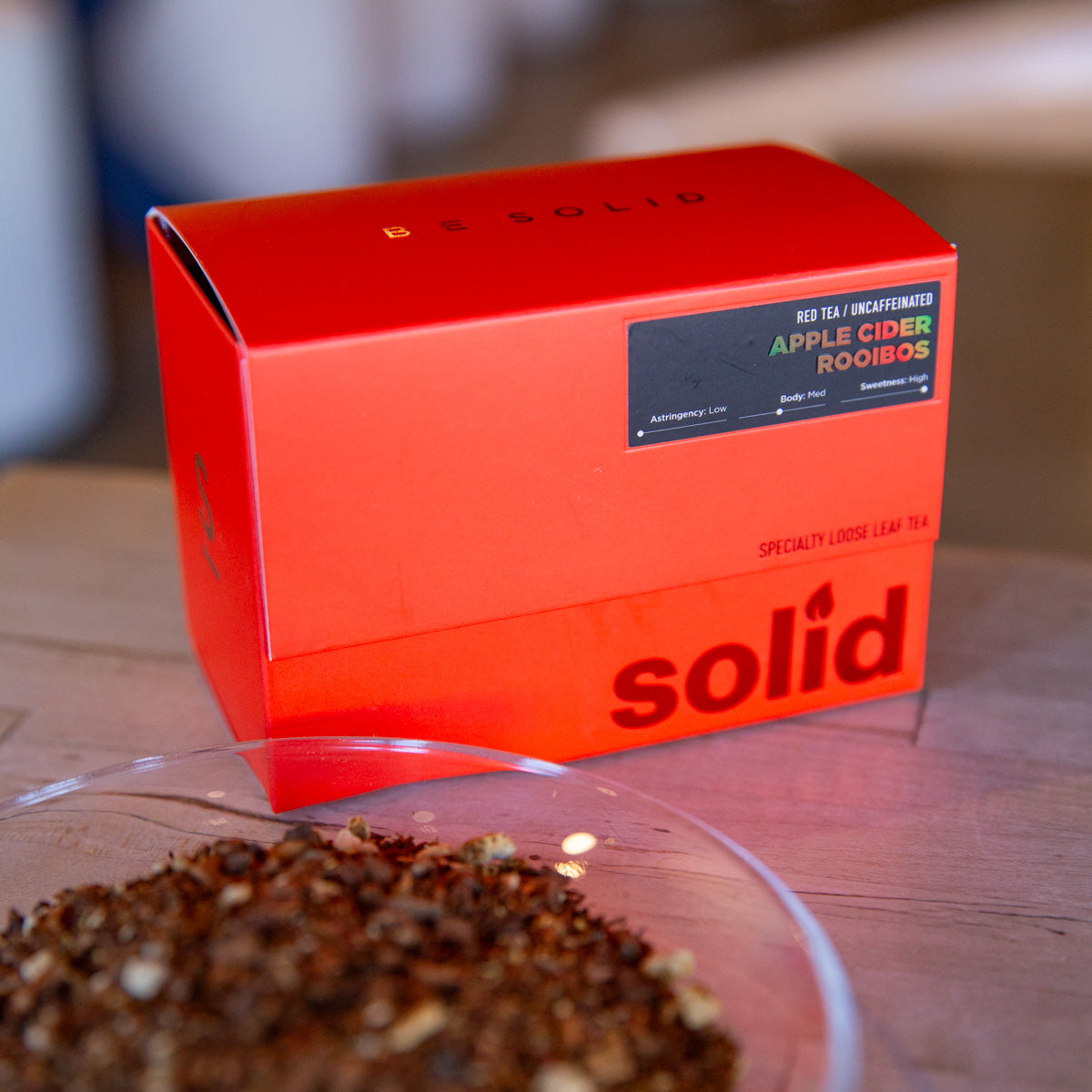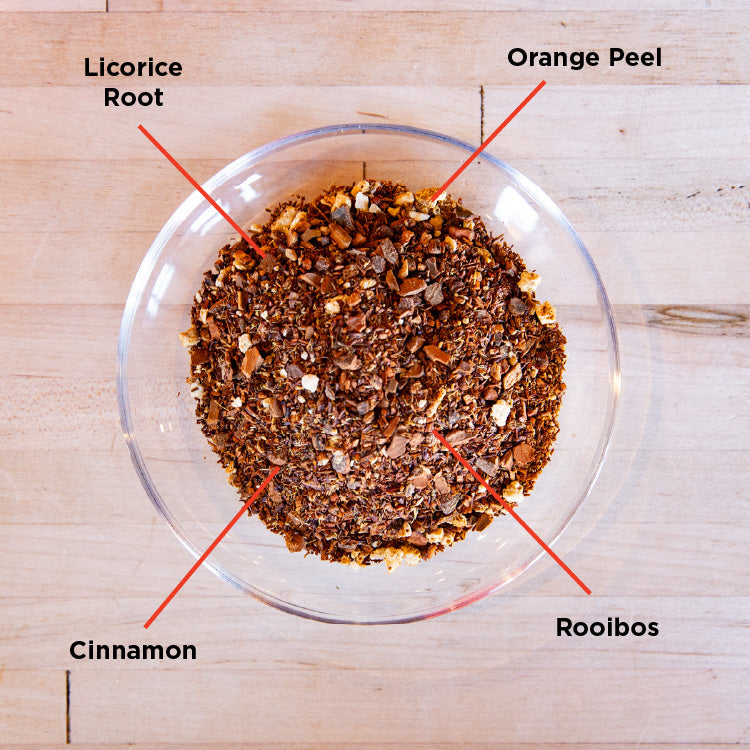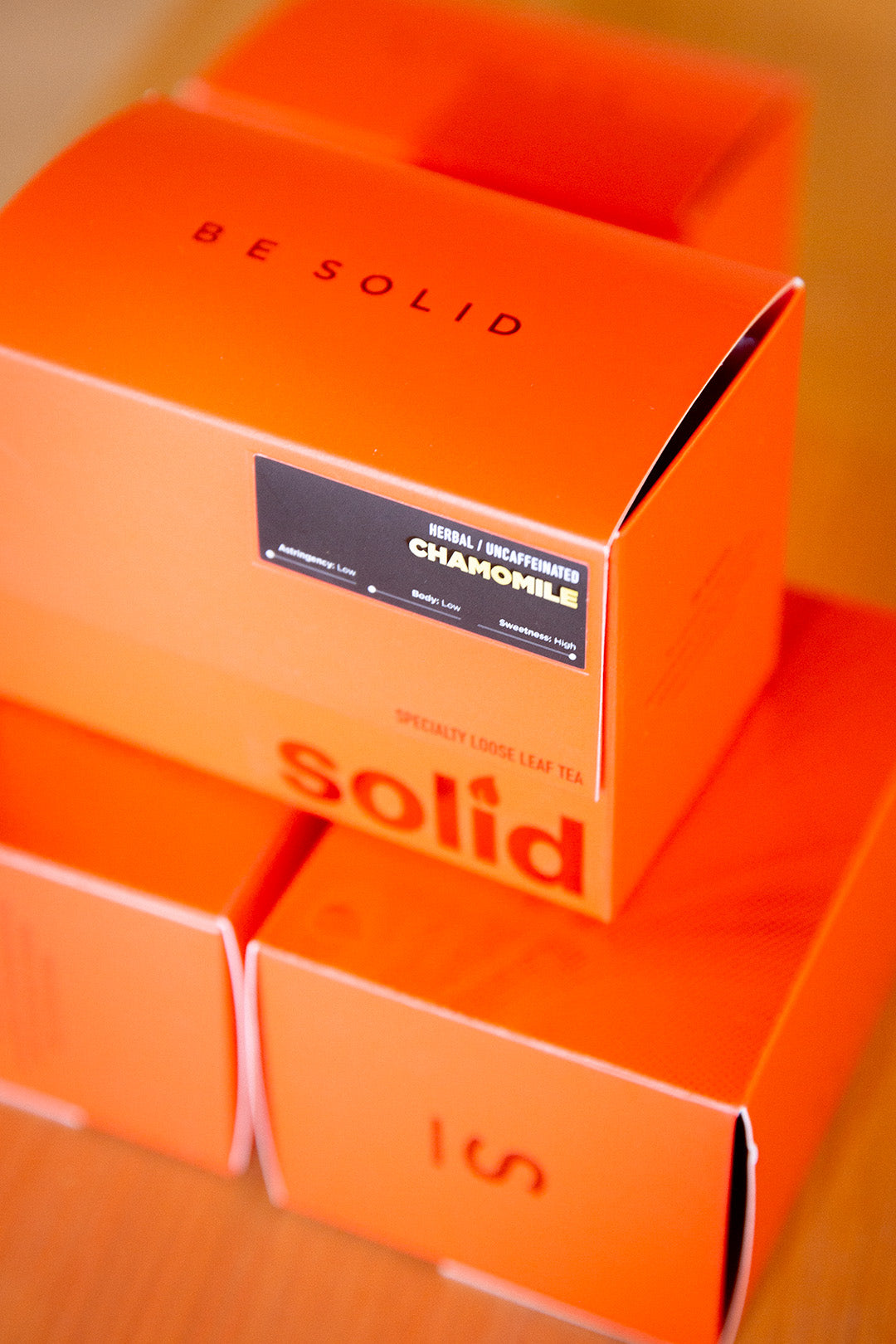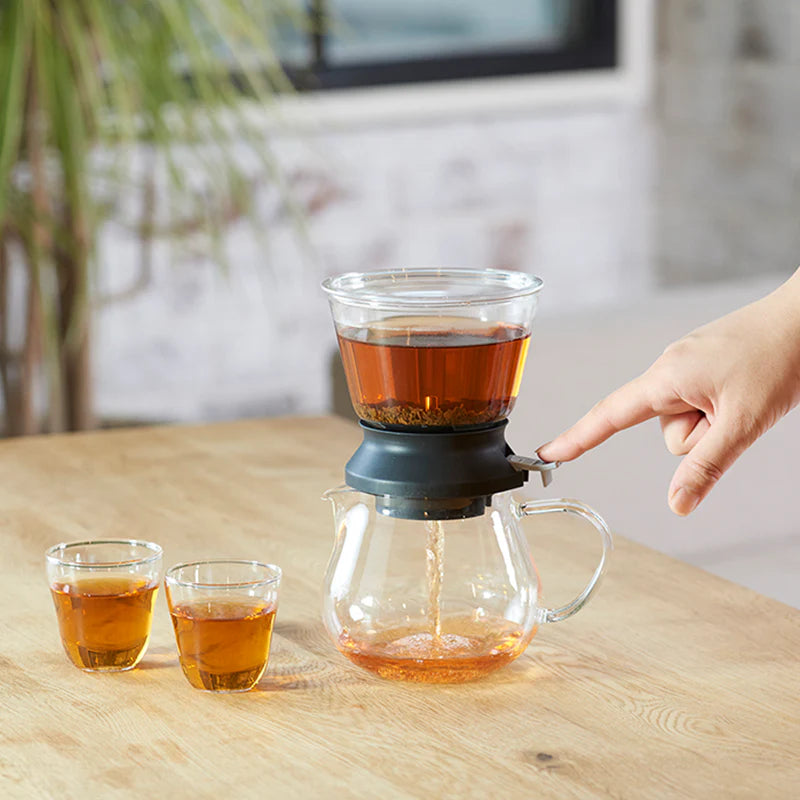

Apple Cider Rooibos - Herbal Tea
Seasonal precision in a cup. Rooibos, cinnamon, and apple spice create the fall menu essential that customers request year-round. Naturally caffeine-free with enough body to stand up to any autumnal signature drink.
Flavor Profile:
Primary: Apple, Cinnamon
Accent: Orange Peel, Licorice
Base: Herbal Red Tea
Finish: Warm, spiced, comforting
Brewing:
Method: Hot infusion
Temperature: 212°F
Time: 5-10 minutes
Dose: 2.5g : 12oz water
Method: Cold infusion
Temperature: Cold or room temp
Time: 6-10 hours
Dose: 10g : 1 liter water
Pro tips:
Use high quality water.
Use a scale for precision and consistency. Adjust your brew time accordingly to your taste preferences.
The same tea leaves can be brewed multiple times in one sitting.
Pairs well with
Ships within 2-4 business days.
Roasted fresh!
Free shipping on orders over $30

Apple Cider Rooibos - Herbal Tea
If you have any questions, you are always welcome to contact us. We'll get back to you as soon as possible, within 24 hours on weekdays.
-
Shipping Information
Use this text to answer questions in as much detail as possible for your customers.
-
Customer Support
Use this text to answer questions in as much detail as possible for your customers.
-
FAQ’s
Use this text to answer questions in as much detail as possible for your customers.
-
Contact Us
Use this text to answer questions in as much detail as possible for your customers.
The Ritual Continues
The ritual continues—just with a different vessel. The same careful preparation. The same intentional moment. The same quality standards you expect from Solid.
We added tea to our lineup because rituals don't stop at noon. Whether you're alternating green tea with your morning pour-over, reaching for herbal after dinner, or building a full-day beverage program at your cafe, the craft remains constant. Your ritual simply evolves throughout the day.
Tea Categories We Carry
Black Tea (Caffeinated)
Fully oxidized. Rich body, moderate caffeine. Our Savannah Sunrise is cold-brew optimized for fruit-forward brightness—perfect alongside your morning coffee or as an afternoon alternative.
Green Tea (Light Caffeine)
Heat-treated to prevent oxidation. Our Organic Genmaicha blends Japanese sencha with toasted rice—traditional Kagoshima precision with about a third of coffee's caffeine. Morning ritual, different rhythm.
White Tea (Minimal Caffeine)
Minimally processed, naturally oxidized. Delicate, sweet, lower caffeine than coffee. Papaya Pineapple Punch uses Chinese white tea (Bai Mu Dan) as its base for a gentle afternoon lift.
Herbal Tea (Caffeine-Free)
No Camellia sinensis, zero caffeine. Organic Chamomile and Apple Cider Rooibos deliver reliable comfort for evening rituals when you want the moment without the buzz.

What This Means for Your Cup
Specialty tea follows the same precision standards we apply to coffee—just with a different plant. Like specialty coffee scored above 80 points, specialty tea is evaluated on verifiable quality markers: whole leaf integrity, adherence to traditional plucking standards, traceable origin, harvest date transparency, and skilled processing techniques.
The difference between specialty tea and commodity tea isn't subtle. Where commodity production prioritizes volume, specialty tea makers focus on preserving traditional craft. That means hand-picked leaves, minimal breakage, proper oxidation control, and careful handling from harvest to your cup. Choosing specialty > commodity helps keep the production process honest and the flavors in your cup a priority.
Your choice supports: Direct relationships | Sustainable farming | Quality over quantity | Tea that builds communities
FAQs
What's the difference between Solid tea and what I buy at the grocery store?
The short answer: Whole leaves, traceable origins, and harvest dates you can verify.
The longer answer: Most grocery store tea is made from broken leaves, fannings, or dust—the byproduct of processing whole leaf tea. These smaller particles extract quickly (convenient for tea bags) but lack the nuance and clarity of whole leaf specialty tea.
Our teas use intact leaves from known origins, harvested during specific seasons. You're getting the actual tea leaf, not what's left over after premium tea production. That means cleaner flavors, better clarity in the cup, and a brewing experience that rewards precision instead of hiding behind a paper sachet.
Why is your tea loose leaf and not in a bag?
Because tea bags weren't designed for quality—they were designed for convenience at scale.
The physical limitation: Bags require broken leaves, fannings, or dust to fit. Whole leaves need room to unfurl and release their full flavor. Cramped in a bag, tea leaves can't expand the way they are meant to, which limits extraction, flavor, and complexity.
The coffee parallel: Would you buy pre-ground coffee in a sealed pouch and expect it to taste like fresh-ground beans? Tea bags are to tea what K-cups are to coffee—a delivery system that prioritizes speed over everything else.
But isn't loose leaf less convenient?
Initially, yes. But once you've brewed it a few times, it takes the same amount of time as dunking a bag—and the result is exponentially better. Use an infuser basket, tea strainer, or the French press you already own.
Why does Solid tea cost more than mass-market brands?
Mass-market tea prioritizes shelf stability and consistent supply chains over harvest timing and leaf integrity. That model works for moving millions of pounds, but it doesn't work for specialty.
Our pricing reflects:
- Whole leaf grades instead of broken fannings
- Traceable sourcing from specific regions and producers
- Seasonal harvests timed for optimal flavor (not year-round availability at any cost)
- Proper storage and handling to maintain freshness from origin to your cup
- The same quality standards we apply to our coffee program
Where is the expiration date?
Tea doesn't expire like milk—it loses peak freshness gradually over time.
Our standard: We recommend consuming tea within 12-24 months for optimal flavor, though properly stored tea remains safe to drink well beyond that window.
Storage matters more than expiration: Keep tea in an airtight container, away from light, heat, moisture, and strong odors. Stored properly, specialty tea maintains its character far longer than improperly stored tea—even within the "fresh" window.
Is specialty tea just for "snobs"?
No. It's for anyone who wants their tea to taste like what it's supposed to be.
Specialty tea isn't about gatekeeping—it's about transparency. We're not telling you what you should like. We're giving you the information to make informed decisions: where it's from, how it's processed, how to brew it correctly.
If you care enough about your coffee to buy fresh-roasted beans, you already understand why specialty matters. Same principle, different plant.
Does water temp really matter? Do I really need a scale?
Short answer: Yes and yes. But here's why it's not fussy—it's functional.
Water Temperature:
Different teas extract optimally at different temperatures. This isn't opinion—it's chemistry.
- Delicate teas (white, green): 175°F prevents bitterness from tannin over-extraction
- Robust teas (black, herbal): 195-212°F fully develops flavor compounds
- Wrong temperature = wrong flavor: Too hot on green tea = bitter and astringent. Too cool on black tea = weak and flat.
Do you need a thermometer? Not forever. But while you're learning, yes. Boil water, let it cool to temp, taste the result. After a few rounds, you'll know what "right" looks like (and tastes like). Then you can eyeball it.
Shortcut if you refuse to measure: Boil water, let it sit 3-5 minutes for delicate teas. Use boiling water directly for black tea and herbals. It's not precise, but it's better than guessing.
Using a Scale:
Volume measurements don't work for tea because leaf size varies wildly. One teaspoon of tightly rolled oolong weighs completely different than one teaspoon of fluffy white tea.
Weight-based dosing = consistent results. Our specs (3g per 12 oz, 2.5g per 12 oz, etc.) eliminate guesswork.
Why We're Specific About This:
Precision isn't pretentious. It's repeatable.
If you follow our specs, you'll get the flavor profile we describe. If you eyeball it, you might get lucky, but you won't know why it worked (or didn't).
You don't need expensive gear. A $15 kitchen scale and a $10 digital thermometer will get you 95% of the way there. After that, it's just following instructions.





